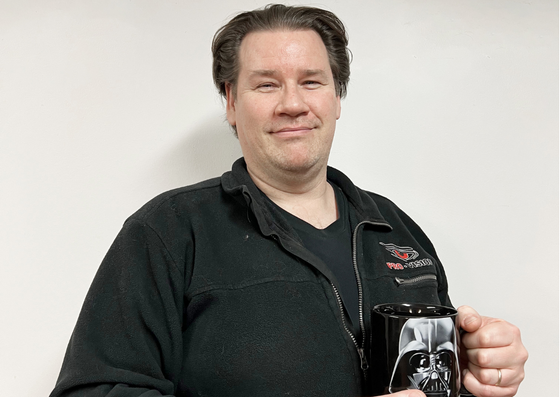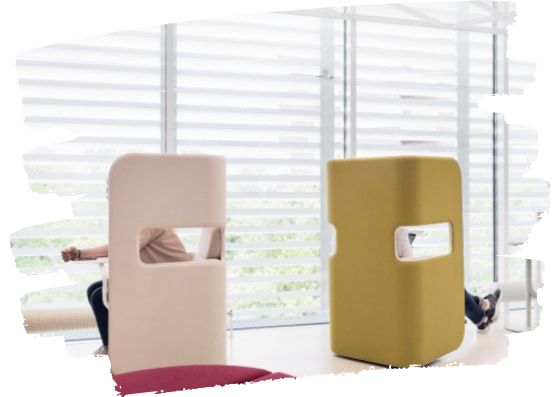💡5 tips on how to avoid pitfalls in AV procurement
.jpg?width=800&height=535&name=IMG_20230103_100842740%20(1).jpg)
During one of our many coffee breaks, we discussed recent changes in the AV industry. We quickly realized that our customers have also been having similar conversations, and a common question is how to keep up with all these changes. In addition to traditional conference rooms, it is becoming increasingly important to build Teams and other remote connectivity solutions, such as video conferencing. Compatibility issues, such as the incomplete USB-C standard, are also a current challenge, as not all devices are compatible with each other despite promises. Often, there are challenges in integrating devices with existing environments, which requires adaptation and can be difficult without professional installation and appropriate hardware.
Inspired by these discussions, we have put together a "emergency kit" of 5 key considerations that we believe cover all the essential themes to consider when planning AV acquisitions. Enjoy your coffee break, and let us know if this topic interests you! ☕
1. AV Procurements Take Longer Than You Think
User needs play a significant role in AV procurements. The solutions should be as easy-to-use and straightforward as possible. Although complex and fancy systems may be appealing, inexpensive and simple options can work just as well. It is important to note that a complex AV system is not always necessary unless there is a compelling need for it.There are various ways to acquire and maintain AV systems. Companies or educational institutions should first decide whether to purchase equipment or lease it. It is also essential to choose a professional AV company for assistance with installation and equipment procurement. Building functional AV systems today is challenging without the help of industry experts. Regarding maintenance, it is not practical for smaller organizations to have a full-time staff member repairing AV equipment. In contrast, even larger organizations may still require professional assistance to ensure smooth maintenance.
Although customers expect everything to be ready and available quickly, reality does not always match expectations. Even with everything done to the best of our abilities, mistakes can happen, and things may require fixing later. However, customers' primary expectation is usually that procurements are made correctly on the first attempt to avoid multiple trials and corrections.
In the public sector, AV procurements typically take longer than in the private sector due to higher bureaucracy. Delivery times are now longer than before, so order processing may take several days or even months. It is important to be patient, as some devices may require a wait of up to six months.
2. Standardizing your AV environment is key to a successful user experience.
It's important to standardize your AV environment to facilitate its maintenance, especially in larger environments with multiple rooms. Users can easily switch between rooms when the devices work the same way, reducing the need for training and ensuring smooth operation in any presentation situation.
When it comes to AV purchases, the current trend is still the construction of traditional meeting rooms, but large video walls and information displays are also being used more and more. These offer new possibilities for using moving images and communication.
Bigger screens have been a clear need, and projectors are gradually being replaced by screens because large screens have become cheaper. Of course, big images are still popular. In addition, streaming is now important, and its functionality in traditional meeting rooms needs to be considered. Sound systems have also improved, as large screens can be combined with all kinds of soundbars. A lot of equipment is coming out, and new standards, such as USB-C, are being introduced as VGA is phased out. Faster and wireless connections are also becoming more common, and information display systems are expanding all the time.
Customers still want good value for money, but it's important to keep quality in mind.
The typical life cycle of a reasonably purchased AV system is about 5 years, but it can be longer, up to 7-8 years, if new requirements do not arise. However, as technology develops, equipment can quickly become obsolete and updates may need to be made more often. The shortest life span for equipment can be just a couple of years. This means that AV equipment should be regularly updated to keep it up to date and to serve users' needs in the best possible way.
Customization should not be forgotten. Customers usually want customization when it comes to more than just mounting a screen on the wall and connecting an HDMI cable. For example, there are many functions in meeting rooms that need to be automated and work in a certain way. Different presentation spaces, such as those requiring AV control, require customization as well. Sometimes, AV systems are highly customized solutions, but the necessary customization usually depends on the customer's needs and usage.
3. Own or Lease AV Equipment - Consider What's the Best Solution for You
AV equipment budgeting is an important question, but there is no simple answer. A reasonable budget is one that enables the equipment to operate according to the needs of the users. The budget can range from a few hundred euros to hundreds of thousands of euros per year, depending on the equipment to be acquired and the scope of the environment. It is important to carefully determine the needs and seek the assistance of a professional company in equipment procurement and maintenance, so that the system operates reliably and efficiently.
If the equipment is seen as having a long lifecycle, then buying is still a very good idea, and with good planning, it can save money in the long run, even if it includes maintenance services. On the other hand, if it is not possible to arrange maintenance of the systems in a sensible way or if maintenance services are not desired, leasing may be a better option.
Leasing can be a good idea if the company does not have enough money or does not want to commit to expensive equipment for a long time. Leasing can also be a convenient way to quickly obtain new and updated equipment without significant initial costs. In addition, leasing may include maintenance and upgrade services, which can help the company keep its equipment up to date and in working order without separate investment.
Therefore, whether to own or lease equipment depends entirely on the company's budgeting and spending needs.
4. AV Maintenance - DIY or Outsource
AV maintenance can be managed in-house or in collaboration with an expert partner, depending on the organization's resources, needs, and expertise. If the organization has sufficient expertise and resources, AV maintenance can be managed in-house, which may also be more cost-effective.
IT professionals often play a key role in AV acquisitions because they are usually involved in the procurement process. Specifically, about 80% of those involved in acquisitions are IT professionals who bring technical expertise and insight - and fortunately, some of them are also knowledgeable about the AV industry. On the other hand, about 20% of the participants are not IT professionals, emphasizing the importance of IT in AV solution procurement.
Alternatively, if the organization does not have sufficient expertise or resources, or if the AV environment is complex and extensive, partnering with an expert can be a good solution. An expert partner can bring the necessary specialized expertise and equipment and provide efficient and professional maintenance. This can also free up the organization's resources for other important tasks.
Both options have their advantages and disadvantages, so the decision should be made based on careful consideration of the organization's needs.
5. How to measure the efficiency and quality of AV procurement and maintenance?
Measuring the effectiveness and quality of AV procurement and maintenance can involve several goals and metrics, depending on the organization's needs and objectives. The most important metrics are usually related to cost, quality, and user satisfaction.
Cost metrics may include the cost per room per year, investment costs, and maintenance costs. Lifecycle length is also an essential metric that can help assess the long-term costs of equipment and systems.
Quality can be measured by factors such as AV equipment usability, reliability, and error rates.
User satisfaction, on the other hand, can be measured using user surveys and feedback.
The goal is to find a balance between cost and quality and ensure that users are satisfied with the performance of AV systems. The choice of metrics depends on the organization's goals and priorities. An AV expert partner can help define appropriate metrics and ensure they are aligned with the organization's goals.
As a rule of thumb, it is better to procure both installation and equipment from the same vendor, as purchasing from different vendors can make coordination challenging.
If you made it this far, thank you for your time! ☕☕☕
Do you have any questions?
For all AV-related inquiries, you can call us at 041-3118412 (Allan).
Do you already have a purchase in mind that you would like to discuss?
You can book a meeting directly from the calendar below, and we can discuss it further in person.

 By
By


